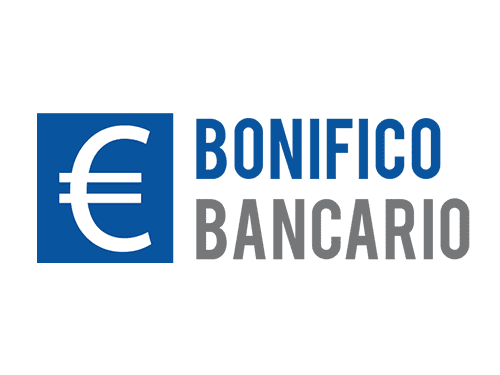Rapid Application Development Model RAD Model
With the upsides and downsides of RAD in perspective, we can pinpoint which kinds of projects stand to gain the most from this dynamic approach. Traditional development methods often lead to ballooning costs due to extended development periods. RAD’s streamlined approach minimises overheads and ensures that resources are allocated efficiently.

To do so, you need to utilize certain RAD steps and phases that proved to be a successful formula for crafting better-quality solutions. By reducing planning time and emphasizing prototype iterations, RAD allows project managers and stakeholders to accurately measure progress and communicate in real time on evolving issues or changes. This results in greater efficiency, faster development, and effective communication. When it is necessary to design a system that can be divided into smaller units within two to three months. When there is enough money in the budget to pay for both the expense of automated tools for code creation and designers for modeling.
Clients We’ve Worked With
Baselining, in other
words, approval of project planning documentation should be of the planning
stage, which allows tracking the software development progress against plans. In RAD, collaboration is essential, as developers, stakeholders, and end-users work together to build the software product, which ensures %KEYWORD_VAR% that the product meets end-users needs and aligns with business goals. Compared to the prototype stage, the stakes are higher in this phase, and extensive testing ensures a flawless product is launched. Launching your product marks the end of the RAD cycle, and the delivery of the final product is complete.

Birthed in the 1980s, Rapid Application Development (RAD) is no stranger to the stage of software development. Instead, it embodies a perpetual evolution of development philosophies, adapting to the dictates of the present technological landscape. This step requires you to test your software product and ensure that all of its moving parts work together correctly and as the client expects.
Rapid Application Development Phases
Therefore, let’s examine a few barriers you will most likely encounter when implementing RAD into a new project. User design is the main course of the RAD methodology—and what sets it apart from other project management strategies. If you have a dedicated team of 5 to 10 people that work closely
with your clients and support flexibility in the development
process, then RAD is perfect for you. Yet, if you still hesitate about whether the RAD approach suits your software
project, you can always get our free consultation on
project management
to set the best strategy for your case. It’s a mobile app that combines the best
features of popular social networks like Tiktok, Instagram, Twitch, and
Clubhouse.

Ensuring every stakeholder is on the same page early in the development cycle assists teams with avoiding miscommunication and costly mistakes. That being said, one of the key principles of RAD is the ability to change requirements at any point in the development cycle. The prototyping and rapid construction phases may be repeated until the product owner and users are satisfied that the prototype and build meets the project requirements. Rapid application development (RAD) is an agile methodology widely used in software development. RAD approach focuses more on the development stage rather than the planning stage, which allows stakeholders to see the process and progress and resolve issues at an early stage. RAD is a progressive development model emphasizing rapid prototyping and speedy feedback over a lengthy development and testing cycle.
Advantage of RAD Model
The pieces are put together to create a complete working model in the construction phase. The RAD model takes information gathered during workshops and other focus groups created to identify what customers want from the product. The initial product is also tested, which helps in the creation of the final product and continued use of the parts of the product that have been proven to be effective. It is imperative at this stage that everyone involved in the project has the opportunity to evaluate the goals and expectations and make required suggestions.
- The initial solution was developed by Barry Boehm, and was known as the “spiral model”.
- The broad nature of the requirements helps you take the time to segment specific requirements at different points of the development cycle.
- It is an iterative process that requires heavy involvement from the client’s side.
- Schedule a discovery call with our team today and experience first-hand how DistantJob can elevate your success with exceptional global talent, delivered fast.
- This third phase is vital because the client still has the opportunity to give
input. - In this stage, developers focus on integrating backend data seamlessly and analyzing which parts should be moved to the production environment.
RAD promises faster development, adaptability, client satisfaction, and continuous delivery. On the contrary, the waterfall model is about meticulous planning and sticking to the timeline. Both RAD and Agile aim to deliver working software that meets the client’s expectations by providing continuous delivery and adapting the software as per the clients’ requests. The client is allowed to change the requirements during the development of both RAD and Agile. Without an abundance of preplanning in the development stage, the prototype can easily be altered to make changes throughout the testing stages quickly. Rapid Application Development (RAD) was created to solve the issue of switching applications.
Software Project Management(SPM)
If your team cannot iterate quickly or you cannot afford the tools which enable them to do so, RAD development may not be a suitable choice for your work. So before you choose a rapid development environment for your project, ask yourself the following questions. Basically, developers gather the product’s “gist.” The client provides their vision for the product and comes to an agreement with developers on the requirements that satisfy that vision. While there are numerous steps involved in the Rapid Application Development model, you can broadly group them together into four phases. When completing a traditional style of the Systems Development Life Cycle (SDLC), there is a lot of planning and analysis done before the actual coding process starts.

The critical difference between RAD and other models is how rapid application
development focuses on speed. Other models usually concentrate more on
bringing a working product to the customer, regardless of how long that takes. In this stage, developers focus on integrating backend data seamlessly and analyzing https://www.globalcloudteam.com/ which parts should be moved to the production environment. The primary objective during this phase is to align features and functions with user requirements as the app is about to go live. After defining the project requirements, the next step is for the development team to start the development process.
Pros and cons of using RAD
RAD offers many benefits, such as rapid delivery by reducing overall development time, better risk management, and increased flexibility and adaptability in the development process. These wonderful benefits make rapid application development tools attractive for developers working in a fast-paced environment. Consider the rapid application development model (RAD), invented by James Martin in 1991. RAD has a high dependency on modelling skills and requires experience with rapid adaptation based on component evolution. A technically strong team is essential to adequately identify and deliver business requirements.
Feedback from end-users and stakeholders is also crucial as it helps developers make the necessary changes to improve the product. RAD ensures user involvement and feedback during the development cycle, making it easier for developers and designers to modify and assess the product regarding functionality and design. Feedback and input from users are crucial in shaping the design and functionality of the application.
Stage 2: Data Modeling
This method lets developers tweak the model until they devise a satisfactory
design. You also need to know that rapid application development prioritizes prototype
releases and iterations. They emphasize software and user feedback over strict
planning and requirement recording.


